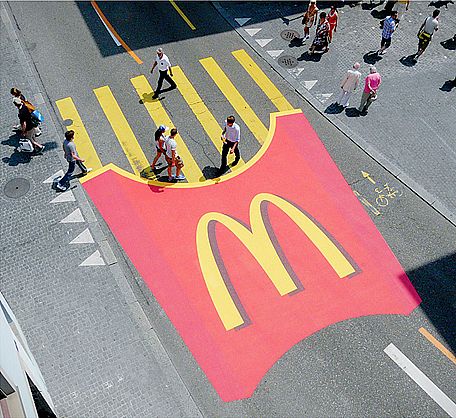Facebook Lessons From McDonald’s
Facebook Lessons From McDonald’s

In 2012 McDonald’s launched a Facebook based social media campaign, which clearly demonstrated that it was possible to generate a huge return on investment through a series of quick serves. Through the Facebook based campaign the global fast food franchise gained an increase in both sales and the number of visitors to their restaurants.
The 2012 campaign ran from the 17th of April until the 29th of May and it encouraged individuals to take back their work lunch hour by enjoying it at McDonald’s. Overall the campaign was so successful that the brand enjoyed a return which was four times their initial investment. Brian Johnson, a Facebook Sales Director, who worked closely with McDonald’s during the campaign said, “We didn’t have a precise projection initially. We expected a strong return, and ultimately feel good about the return. It’s consistent with what we’ve seen in this industry and other industries, as well.”
The goals of the campaign were not strictly limited to increasing the fast food behemoths bottom line, the campaign had an additional two objectives. Johnson stated that these were as follows, “to drive traffic in particular during the lunch daypart, and also to focus on the premium products—Angus Burgers and premium chicken sandwiches—boosting sales and interest of those products during that daypart, as well as throughout the day and other dayparts.”
The campaign was shaped around the notion of inspiring workers to escape from the constraints of the office during their lunch breaks and instead head to their local McDonald’s restaurant. The agency McDonald’s used for this campaign was DDB, who chose the tagline, “It’s your lunch, take it!” They chose this tagline as they felt it would be easy for social media users to share, a vital component attributing to the success of social media based campaigns.
Johnson provided further insight into the campaign, stating, “In today’s world, it’s not uncommon for people to work hard during their lunch hours. The campaign was about sparking a conversation in a simple way: through likes and comments on their page posts. As friends started taking this activity, you’d see this momentum that people would go out and take their lunch. It was really about the likes, comments; simple actions that spread virally across Facebook.”
The brand, who pride themselves on their fast paced service, used Facebook as the core of campaign which was integrated across a number of mediums. Examples of other mediums used in the campaign included televised adverts encouraging viewers to visit the brand’s page in order to learn more about taking back their lunch break. On Facebook, the campaign also introduced a “Lunch” tab, users who visited this tab were invited to read the campaigns “manifesto”. An extract of the manifesto read as follows, “Today we put an end to the working lunch and start working on eating it at McDonald’s”. Users were then encouraged to share it with their friends through their Facebook network.
The campaign was aimed at an age demographic of 16 to 45 year olds within the US. It began with a number of Facebook posts which were then promoted as Ads by DDB across the platform. Johnson commented on the posts, stating, “All of the posts that had messaging specific to this campaign were promoted. There were a variety of different posts that they used. Some were simple photo images, which do extremely well on our platform. Others were questions, as well as video posts that they used.”
Following the campaign, Facebook studied McDonalds’ efforts in a greater level of depth than it had for any previous campaign conducted on the platform. In order to gauge the effects of Facebook in isolation to the other media based campaigns McDonald’s was running at the time a custom experimental design was used. This was done in order to observe the correlation between exposure to Facebook Ads and unit sales. When completed this measure revealed that the awareness around certain items or meals which were promoted as part of the campaign increased.
The key lesson from the McDonalds’ campaign according to Johnson is that, “we successfully drove incremental sales, verified by McDonald’s and their teams. To have it verified by the client using their sales data is unique. Second was collaboration and openness. That doesn’t happen without a lot of trust, not just between Facebook and McDonald’s, but also their agencies.”
